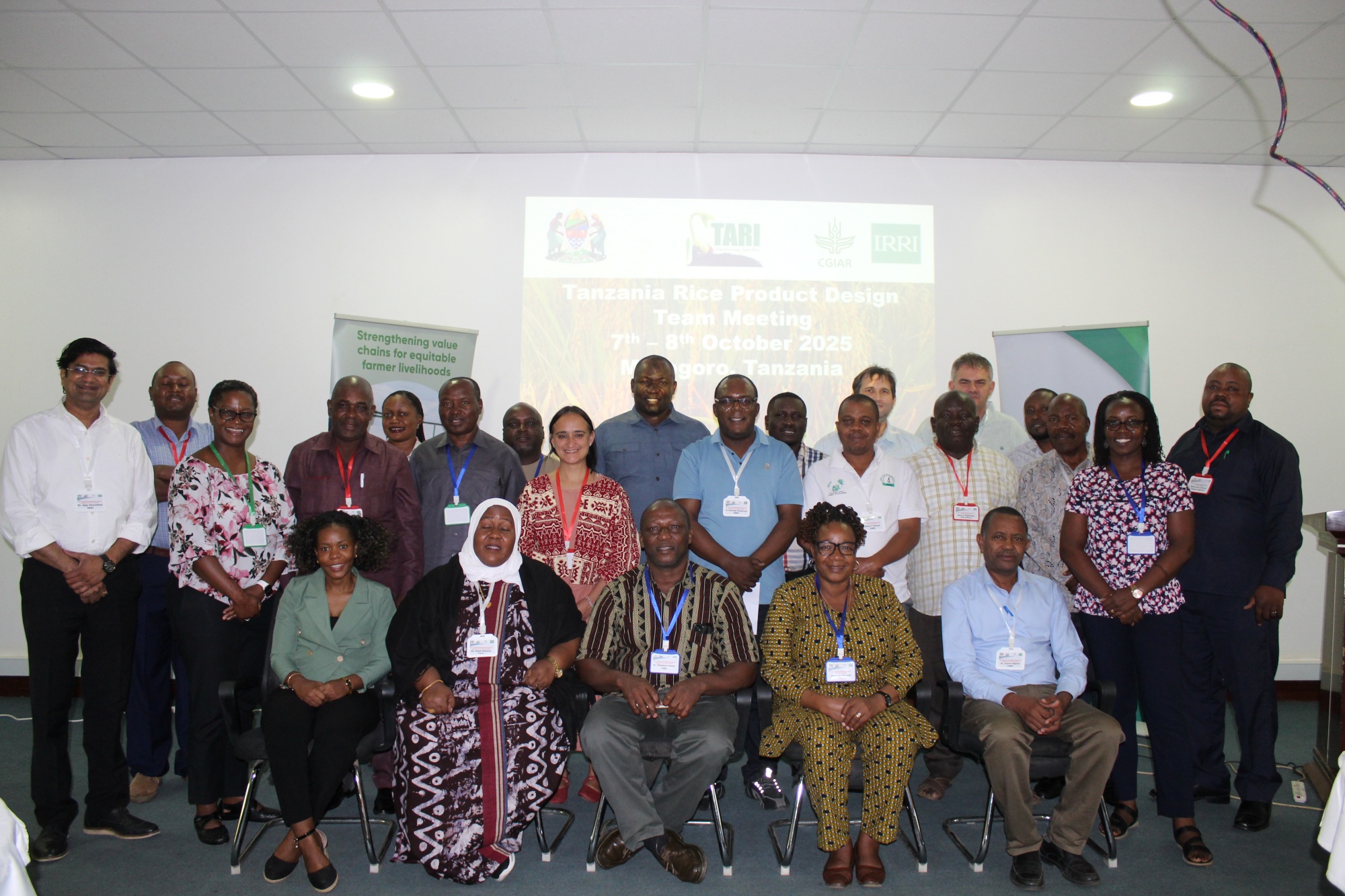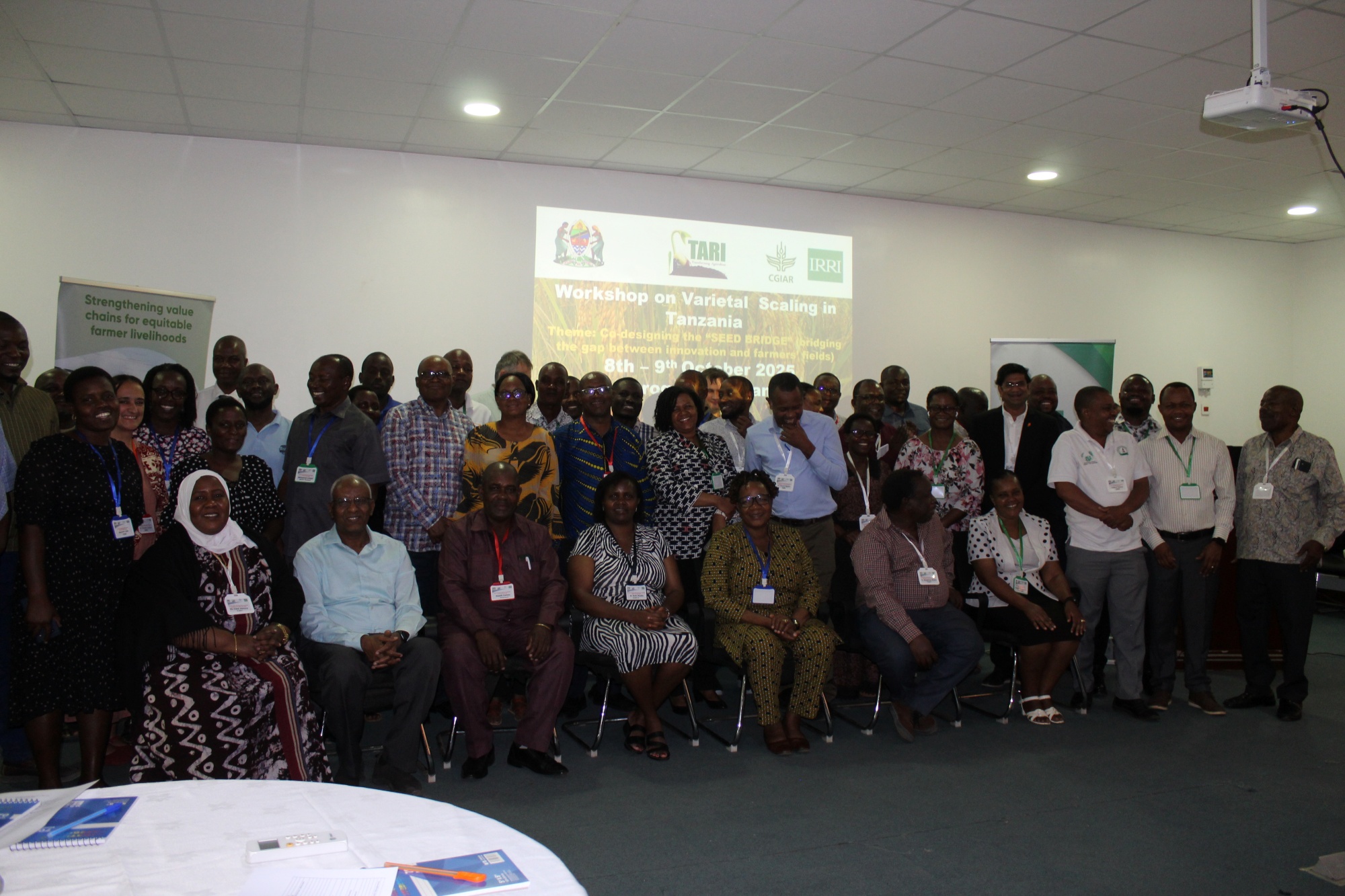
Next-gen rice lines top check varieties at 7.5 t/ha in ESA
MOROGORO, Tanzania (8 October 2025) — Elite rice lines are outperforming the current popular varieties across Eastern and Southern Africa (ESA), reaching up to 7.5 tons per hectare in trials, with next-generation lines poised to hit 9 tons.
These results were presented during the ESA 2025 Advancement Meeting held by OneIRRI- NARES Network for East and Southern Africa, where the International Rice Research Institute (IRRI) and its National Agricultural Research and Extension Systems (NARES) partners reviewed and advanced top-performing breeding lines for further national performance trials (NPT) and eventually for national release.
“Research must lead to varieties that meet both farmers’ and market needs,” said Dr. Michael Gavin Quinn, Research Director of IRRI’s Rice Breeding Innovations (RBI). He explained the importance of Target Product Profiles (TPP), a key decision-making tool regularly updated with inputs from scientists, partners, farmers and the value chain actors to keep rice varieties relevant to market needs and impactful.
Dr. Ajay Panchbhai, IRRI’s Regional Breeding, Seed Systems and Product Management Lead for East and Southern Africa, shared that this year’s advancement process showed steady improvements in trial design, data accuracy, and multi-location testing across Tanzania and other ESA countries.
In the Direct-Seeded Early Maturity trials, the top 40 rice lines yielded 6.5–7.1 tons per hectare, compared to 4.2–6.4 tons for the check varieties. The best lines advanced to on-farm testing.
In the medium-maturity transplanted trials, about 350 lines were tested in stage 1 trials, with 35 moving to the next stage. The top 20 tested rice lines in Stage 1 were predicted to yield 6.6–7.2 tons per hectare, while top untested lines could reach 7.6–9.1 tons. In Stage 2, the top five lines achieved at least 5.6 tons per hectare, showing a yield advantage of up to 36% over the check variety IRRI 154.

OneIRRI- NARES Network for East and Southern Africa also highlighted the adoption of advanced breeding tools and strategies, including the OneRice Breeding Framework, which integrates the full process from pre-breeding to seed systems. Scientists also reported using CGIAR’s BioFlow tool to standardize data analysis across breeding programs.
Rice production in ESA faces ongoing threats from diseases such as blast, rice yellow mottle virus (RYMV), bacterial leaf blight (BLB), and sheath rot. Using the PathoTracer platform, researchers processed over 5,000 rice line samples from 18 partners across 13 countries to identify disease-resistant varieties and key bacterial blight strains. This work is critical for developing stronger, more resilient rice varieties to protect harvests and farmers’ livelihoods.
To leverage best practices in disease management, a Crop Protection Community of Practice, involving 26 countries and 34 NARES institutions across sub-Saharan Africa, will be strengthened further.

Through CGIAR’s Breeding for Tomorrow (B4T), more than 130 Product Design Team (PDT) meetings have been held to refine country-level TPPs . This exercise helps align breeding targets with national market needs.
“The genetics have proven merit, but the real impact will come through your efforts,” said Dr. Sankalp Bhosale, Deputy Director of IRRI’s Rice Breeding Innovations. “We are here to support you, together with CGIAR colleagues and private sector partners, to advance the next generation of rice breeding in ESA.”
This initiative is part of IRRI’s work under the CGIAR Breeding for Tomorrow (B4T) Science Program through its Accelerated Breeding and Enable areas of work. The program aims to drive productivity, increase varietal adoption, and support more resilient and farmer-focused food systems by embedding market insights into breeding pipelines across Africa and Asia.